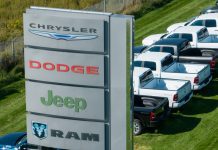Used-vehicle inventory levels are at the lowest point in almost nine years. Twenty years from now, economists will not have much difficulty explaining what happened. A confluence of factors, starting with the semiconductor shortage and pandemic-induced consumer behavior changes, upended supply and demand. With fleet and rental car providers scrambling to regrow fleets, and consumers leasing less because of rising costs associated with supply constraints, reliable channels for used vehicles have dried up this year. Based on current forecasts, it doesn’t appear 2022 will offer much of a respite.
| Related: A look inside the current state of the semiconductor microchip shortage |
The market conditions that restrained the used-car market show no signs of reversing soon, with U.S. new-car production reduced by 3.4 million units in 2021. During this period of lean inventory, dealers have looked beyond traditional methods for acquiring inventory, in many ways transforming the fundamentals of auto retailing. To withstand the used-car shortage expected in 2022, dealers must consider sourcing vehicles outside of the traditional box and through channels beyond billboard and TV advertising.
Service Bay as an Inventory Source
For many consumers, dealerships are points of service. And with used cars appreciating in value during 2021, dealerships should expect that most customers will elect for repairs, as fixing a used car likely is more economical than trading it in for a new one. Nevertheless, dealerships cannot discount the service bay as an opportunity for inventory. Dealers should be identifying weary customers who may not be ready to take on a large repair bill. With appointment management platforms, used-car managers can easily track upcoming service appointments, proactively looking for vehicle owners who are likely to trade or sell their cars. They also can tailor their search to target customers with high-demand used cars to maximize inventory. This type of technology helps find the needle—a.k.a., your inventory—in the haystack much faster.
The rise of eCommerce in the auto industry has led many to question the role of physical dealerships. However, their relevance remains clear. There always will be a segment of the population who wants to test-drive a car before making a purchase, and dealerships are still a “go-to” when it comes to repairs. By servicing cars already owned by consumers, dealerships have a whole ledger of used vehicles that could serve as potential inventory in 2022. Used-car managers must be proactive and precise to take advantage of this valuable data.
Customers as Sellers
During times of economic uncertainty, there is an urge for dealerships to cut advertising. But when dealers are competing with each other and consumers at the same time for used cars, they run the risk of empty lots. If used-car managers hope to fill lots, they must consider “We’ll Buy Your Vehicle” campaigns, leveraging the dealer’s website to promote the purchase of used vehicles. With modern platforms, dealers can brand and proactively market their car-buying processes using banners and website landing pages.
Data is King
Many dealers are sitting on troves of valuable customer data that can optimize their marketing. Data-driven dealerships can establish campaigns to source inventory from customers who have high interest rates, substantial equity, or a history of frequent repair. Though few and far between, off-lease vehicles also remain attractive and can help boost dealership inventories. With the right data points, dealerships can create personalized content that informs consumers about selling their current car to the dealer quickly and without friction.
Undoubtedly, dealerships are facing precarious times. To succeed, they must be savvy to the habits and needs of their buyers while remaining the trusted, go-to resource for existing customers who are in a prime position to sell their cars. Ultimately, the goal is to help used-car buyers understand that they have options, and there is no need to settle when it comes to making a purchase. Now is the time for dealerships to leverage the latest tactics, tools and tech to help expand their inventory with more options, enhance the used-car buying journey, and help buyers forget all about the inventory shortage—because they got a fair deal and the car they wanted.
Did you enjoy this article from Noah Lee? Read other articles on CBT News here. Please share your thoughts, comments, or questions regarding this topic by submitting a letter to the editor here, or connect with us at newsroom@cbtnews.com.
Be sure to follow us on Facebook and Twitter to stay up to date or catch-up on all of our podcasts on demand.
While you’re here, don’t forget to subscribe to our email newsletter for all the latest auto industry news from CBT News.











